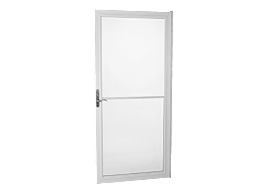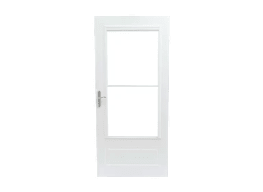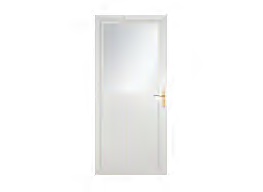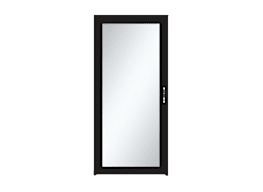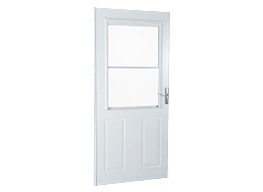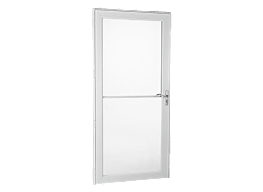Best Storm Doors of 2025
We tested the best storm doors for weather resistance, ease of installation, and operability
When you shop through retailer links on our site, we may earn affiliate commissions. 100% of the fees we collect are used to support our nonprofit mission. Learn more.
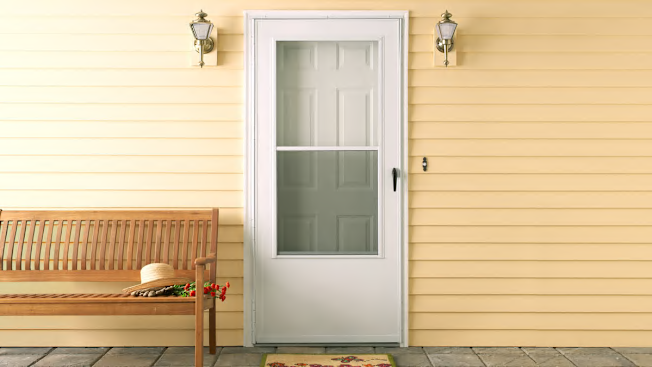
Adding a storm door can be a smart bang-for-your-buck upgrade that protects your main entry door from rain, snow, sun, and wind while bringing in natural light and air. And while a storm door’s first job is to protect your entry door, it can do a lot more, says Daniel Adema, founder of StormDoorGuy.com and a storm door installer in Colorado who has done over 18,000 installations.
The best storm doors do a couple of things right. “For one, there’s the security aspect,” Adema says. “When solicitors come knocking on your door and you open up the front door, there’s a barrier between you and whoever is standing on the other side. Two would be energy efficiency, creating an air pocket that provides additional insulation.”
CR's Guide to Home Improvement
Find top-rated products and expert tips to help you save energy and money—and protect your home from extreme weather.
Best Storm Doors
Our tests of durability, functionality, and ease of use revealed impressive performance from the best storm doors. Based on those tests, here are our top picks.
How CR Picks the Best Storm Doors
We look for storm doors that combine durability and ease of use with simple installation. Our top-rated picks are practical, long-lasting, and offer real convenience. Here’s what sets the best storm doors apart:
They block drafts. The best storm doors keep out drafts and maintain a solid seal against light winds and cold air. While they’re not made for heavy storms, we focus on models that reliably reduce air leaks for everyday use.
They’re easy to use. Good storm doors should be simple and smooth to operate. We look for doors with screens, latches, and closures that work well without fuss. Models with retractable screens that transition easily from glass to screen, along with secure latches, make daily use smoother.
They’re simple to install. Storm doors that are easier to install are a big plus. We favor models with predrilled holes, all necessary hardware, and clear instructions that make installation quicker. Adjustable thresholds and flexible hinge placements also help doors fit more snugly, especially on frames that aren’t perfectly square.
They’re built to last. We found that more durable doors with rust-resistant aluminum frames, reinforced corners, and tempered glass stand up better to regular use and different weather conditions. These features help the door stay sealed and in good shape over time without warping or loosening.
How CR Tests Storm Doors
To identify the best storm doors, we simulate real-life conditions, focusing on wind resistance, ease of use, installation time, and how straightforward each model is to set up. Each door is mounted on a prebuilt frame that resembles a typical home entry, ensuring an apples-to-apples comparison.
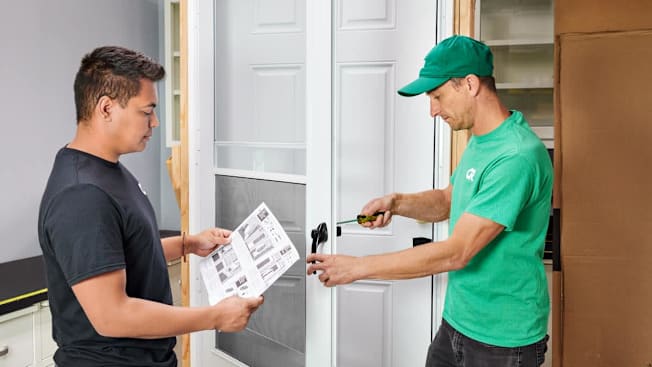
Photo: Scott Meadows/Consumer Reports Photo: Scott Meadows/Consumer Reports
Wind Resistance
We assess how well each door blocked drafts by mounting it in a frame and exposing it to a steady 25 mph wind. A precision meter measures any air that snuck through, helping us rate each model on its draft protection. Because storm doors aren’t meant for severe storms, we focus on their ability to reduce everyday air leaks. Doors that minimize airflow get the highest marks for wind resistance.
Ease of Use
A storm door should work smoothly and intuitively, especially since you’ll be using it daily. We test screens, latches, and closers, checking how easy it is to open, lock, and hold the door in place. Models that operate without fuss and had simple, dependable features score highest in this test.
Installation Time
Some doors took just 45 minutes to install, while others required 2 hours or more. We time each installation on a standard frame to see how quickly each door could be set up with basic tools. Models with predrilled holes, full hardware kits, and clear instructions score highest for saving time.
Ease of Installation
We also rate how straightforward it is to install each door and how well it adapts to different entryways. Doors with adjustable thresholds, bottom sweeps, and flexible hinge placements enable a snug fit even in frames that are slightly uneven. Models with clear instructions and adaptable components make the whole process smoother, especially for DIY installers.
Before You Buy a Storm Door
Before you spend a couple hundred dollars (or more) on a storm door for your house, make sure you account for these considerations:
Consider sun exposure and door color. If your storm door will face south or west, especially in a hot climate, opt for a model with ventilation or a lighter color. Dark storm doors, particularly those with full glass, can trap heat and may cause warping or damage to the entry door behind them.
Determine your door’s swing direction. To simplify operation, storm door handles should usually be placed on the same side as the entry door. But if you have a wall close to the door, you may want the storm door to swing toward it, keeping the area around your main door clear. Before you buy, check to see whether the model is reversible or fixed in a specific direction.
Add a chain or stop for windy areas. For houses in windy regions, a chain stop prevents the door from hyperextending and straining the hinges. For a simple fix when a chain isn’t applicable, you can place a heavy flower pot filled with sand as a doorstop at a 90-degree angle.
Measure twice, buy once. Precise measurements are essential. Standard door openings are typically 30, 32, or 36 inches wide, and even a 1/8-inch discrepancy can affect fit. Most storm doors have a tolerance of about 3/16-inch for width, so double-check dimensions to avoid problems.
Account for installation time and costs. Installing a storm door is a precision job and can take 4 to 5 hours for DIYers, while professionals can complete the job in under an hour. Professional installation typically costs $200 to $400, depending on the region.
Do prep work before installation. Make sure any exterior trim is intact and free from rot before installation. If your doorframe needs painting, do it before installing the storm door to avoid tedious touch-ups later.

















